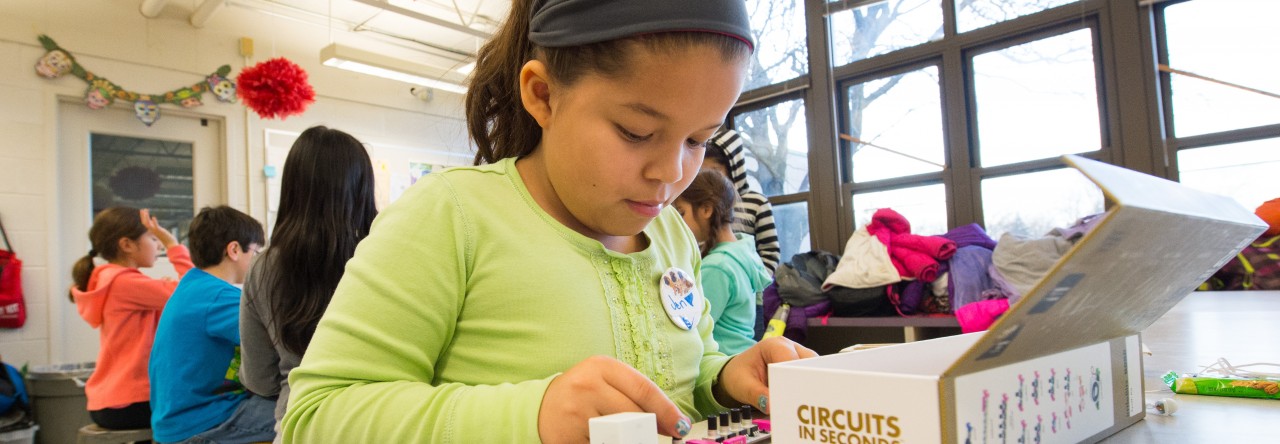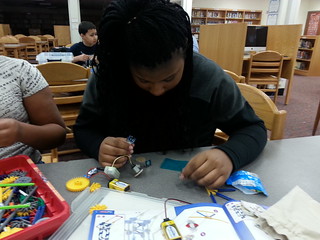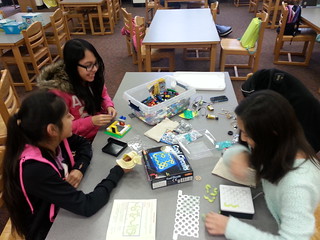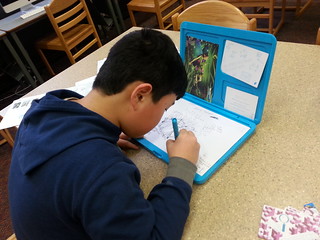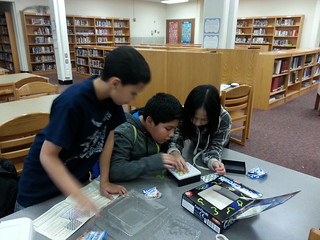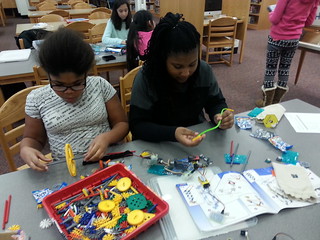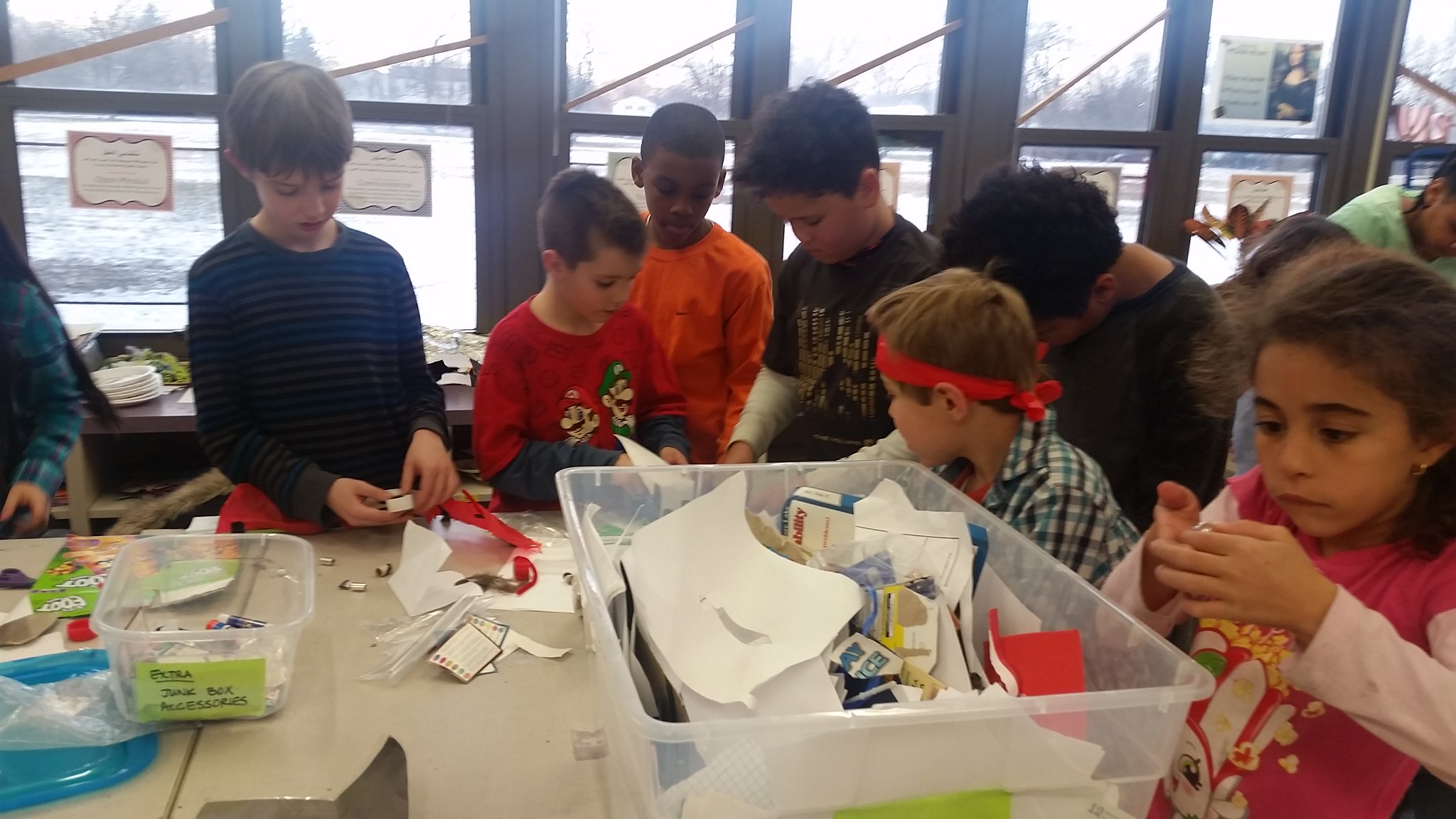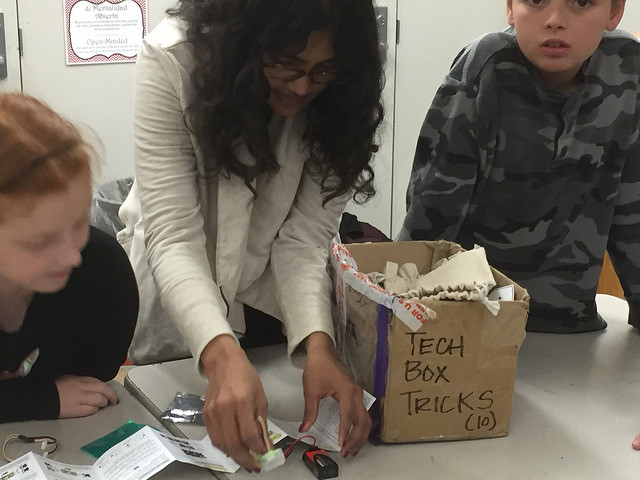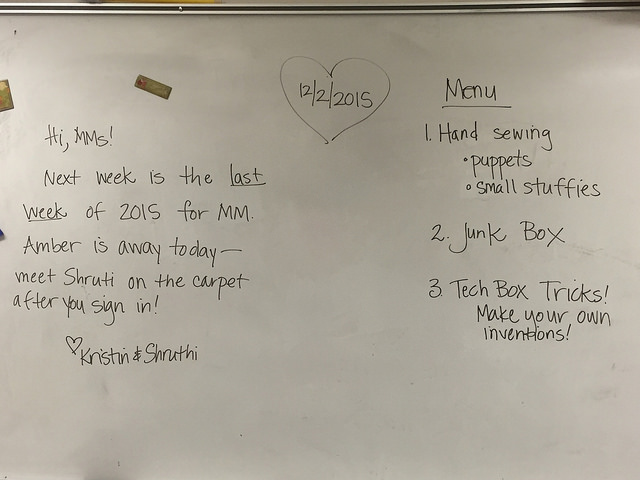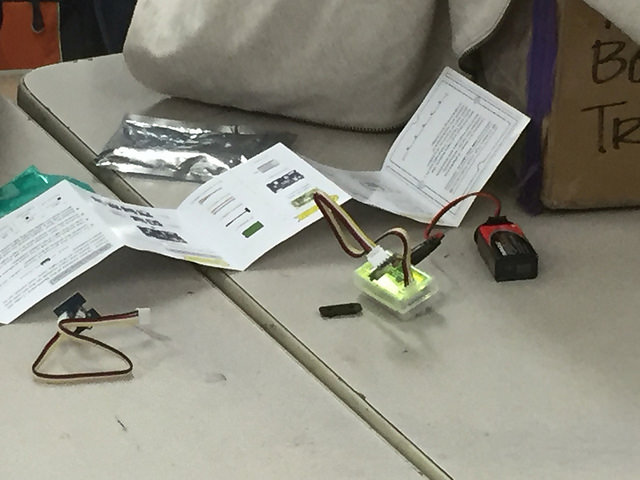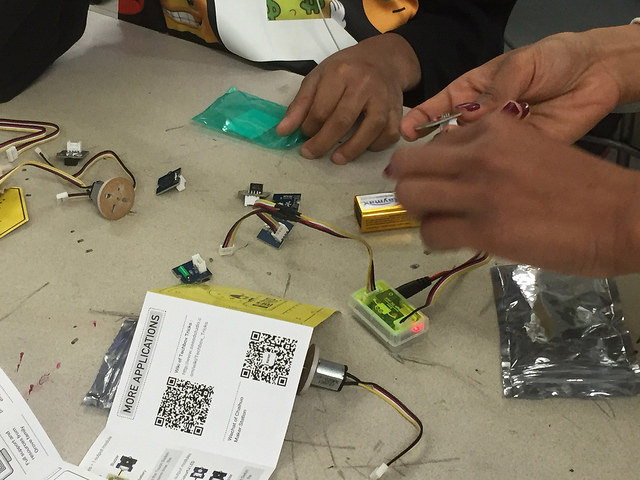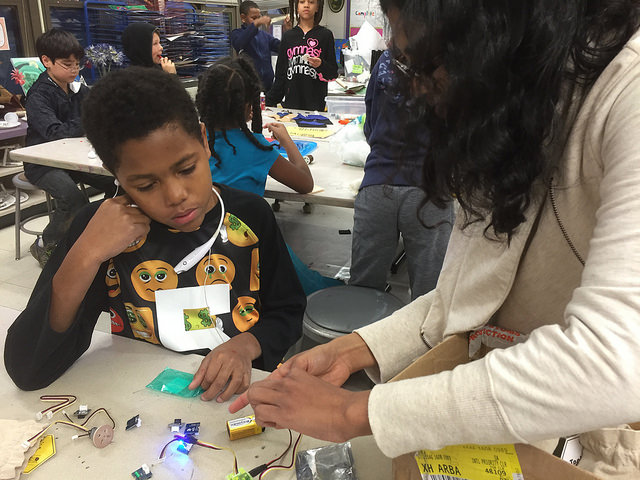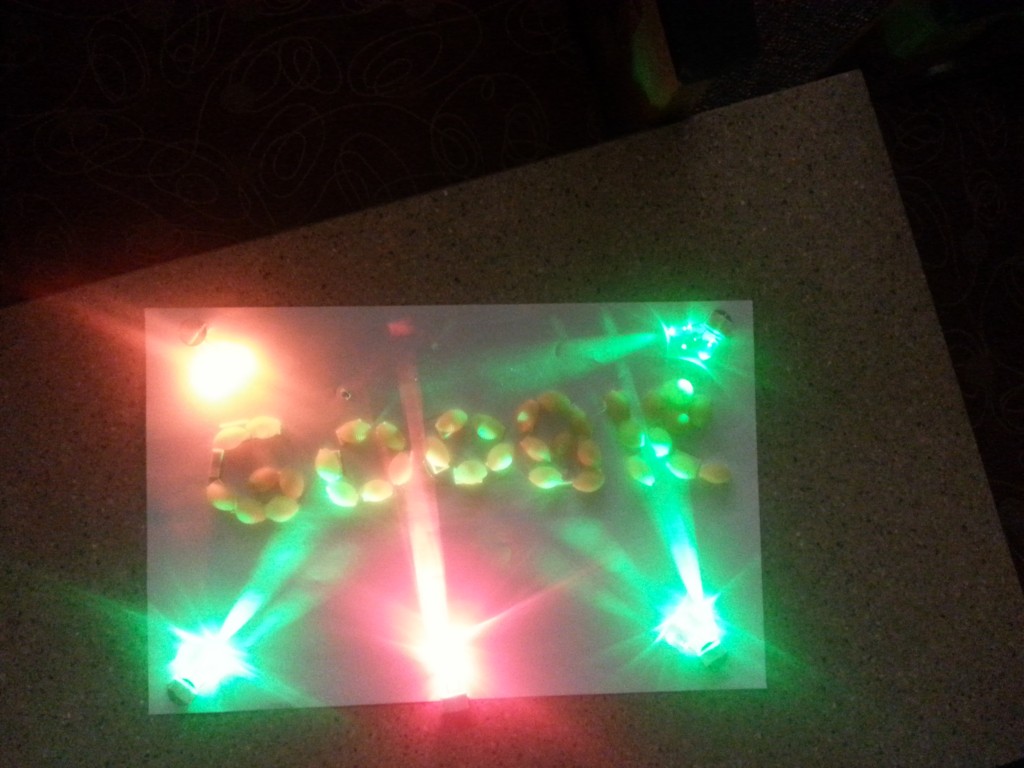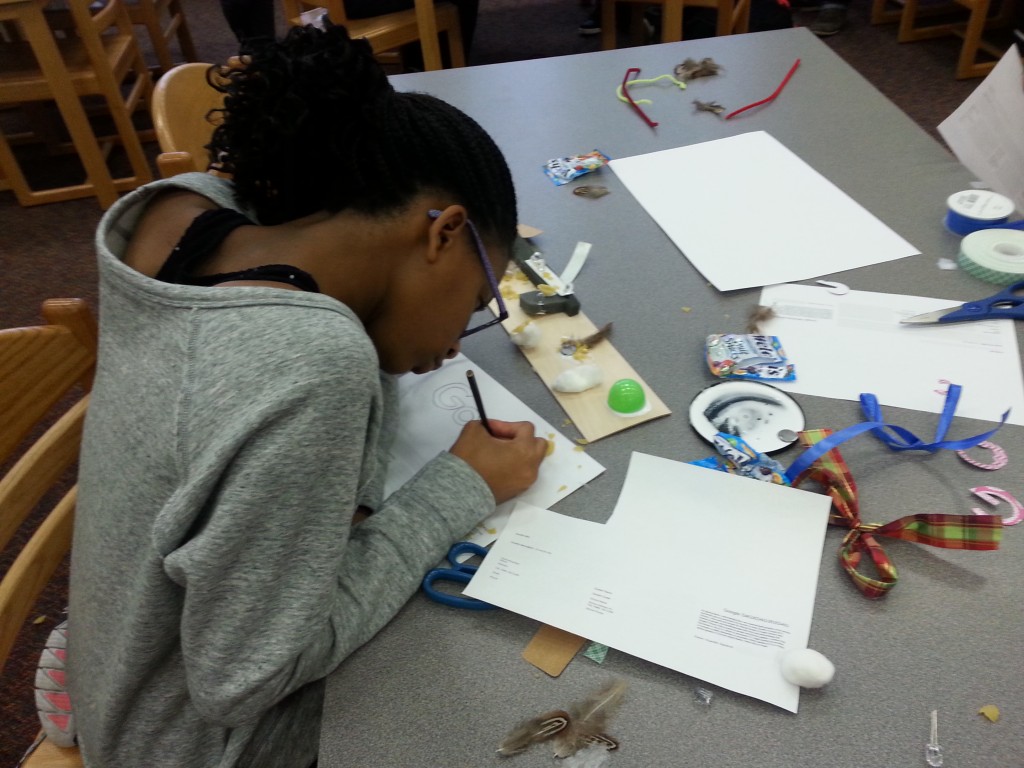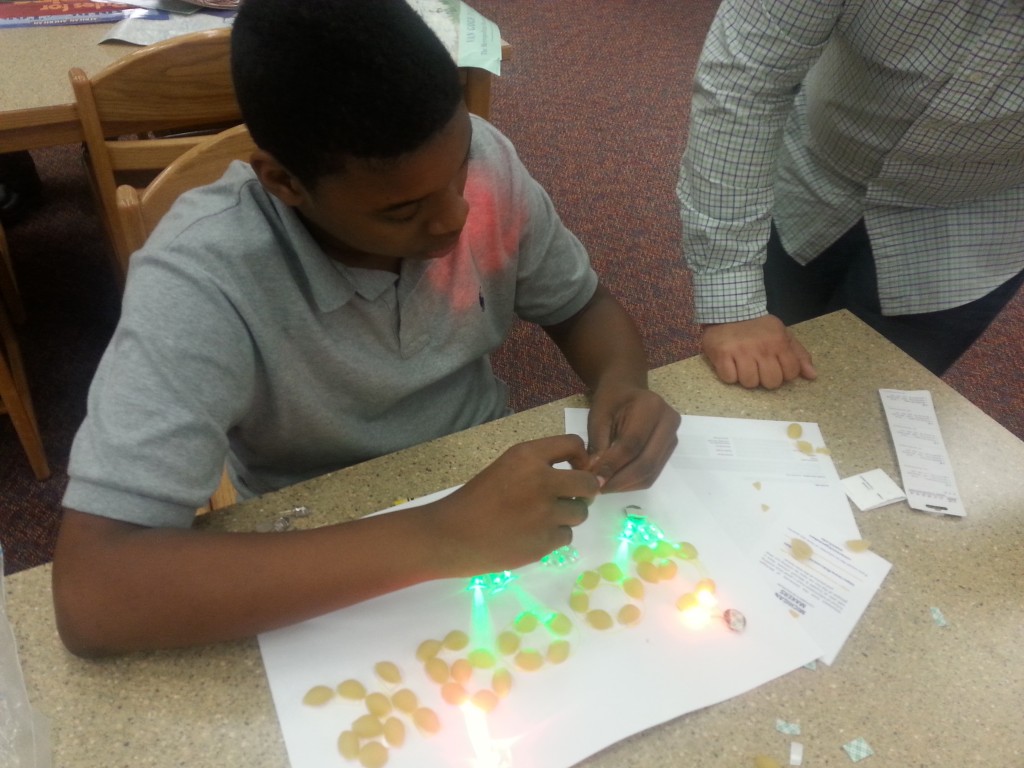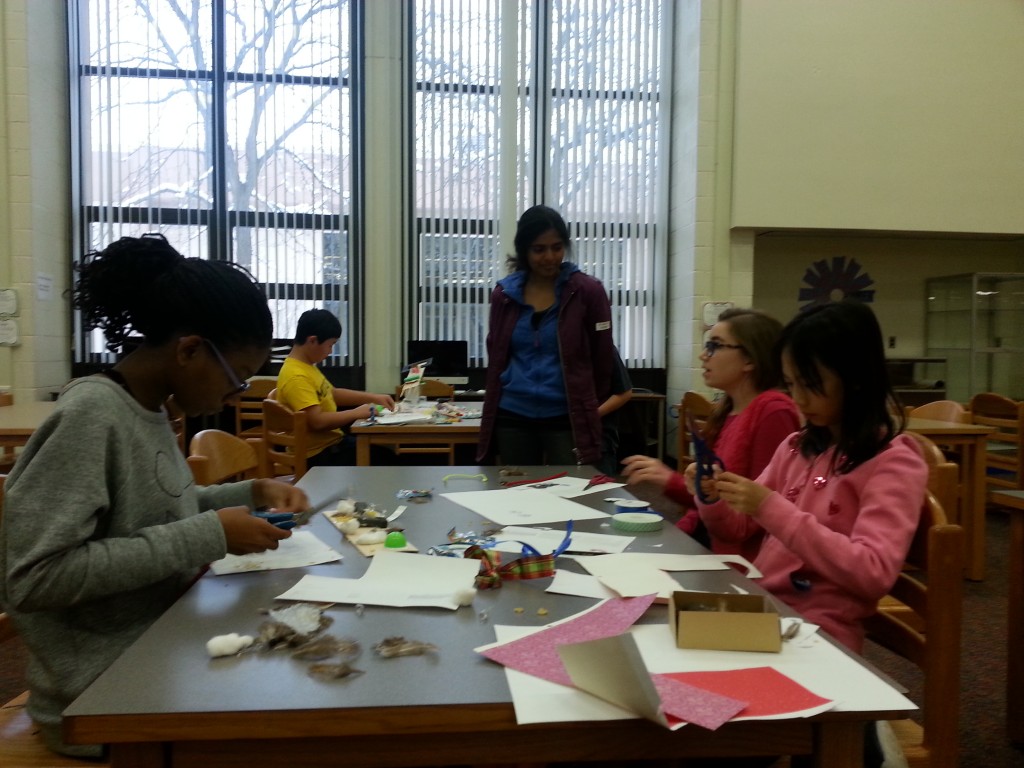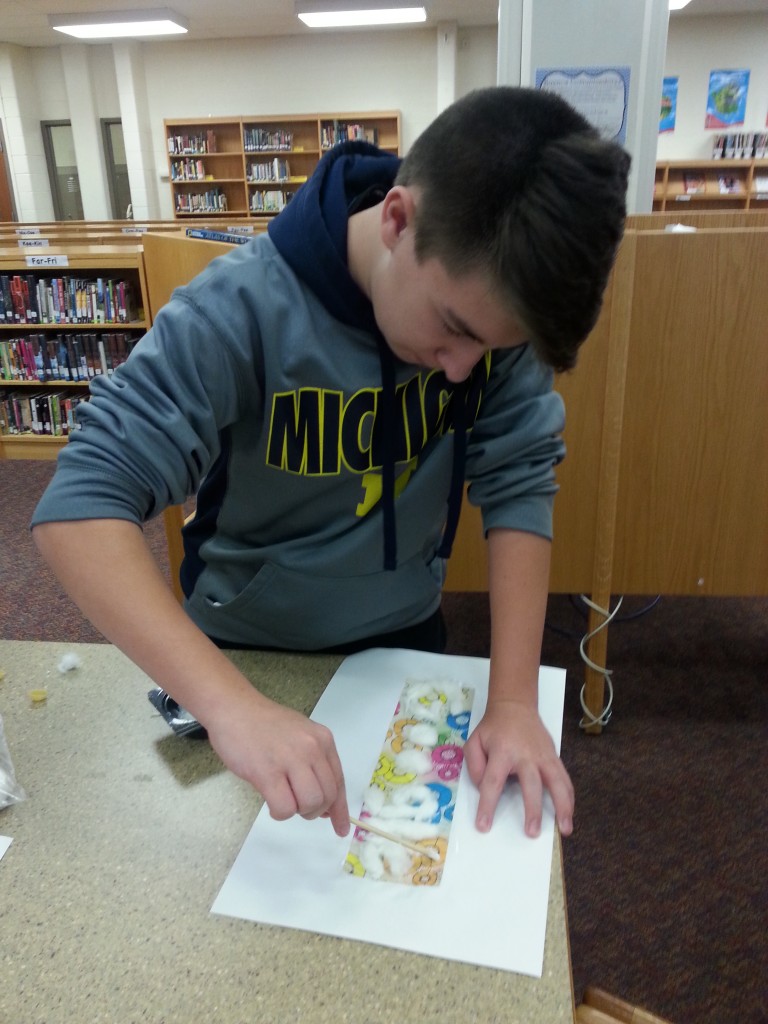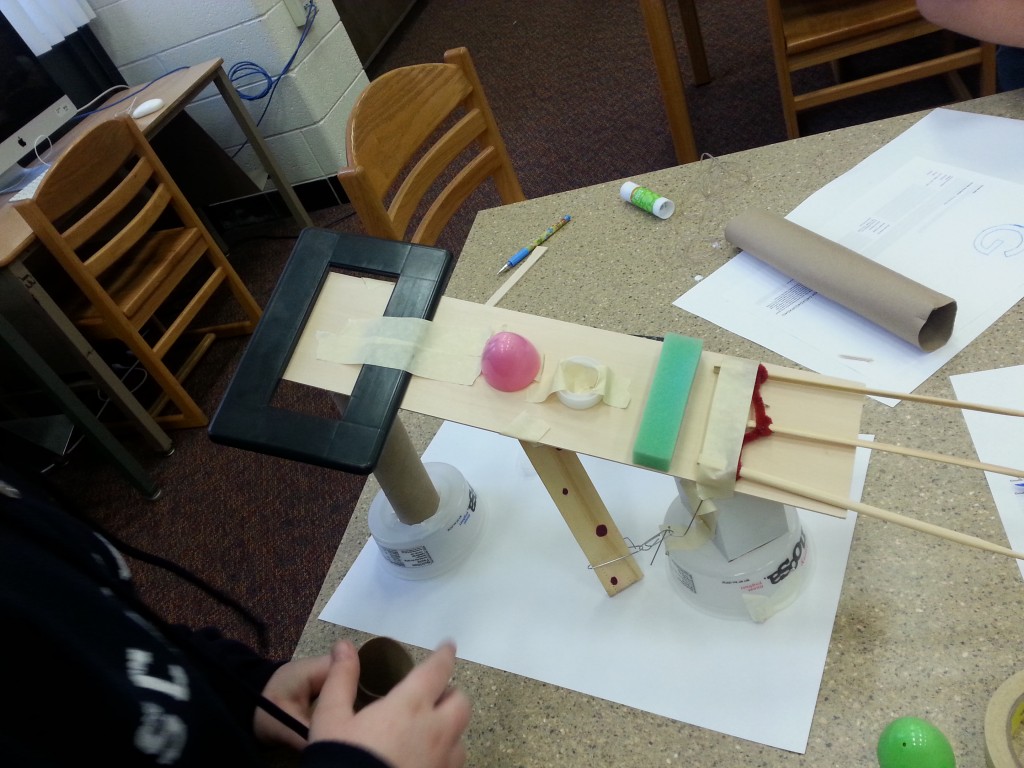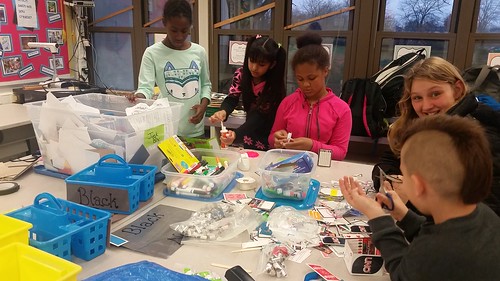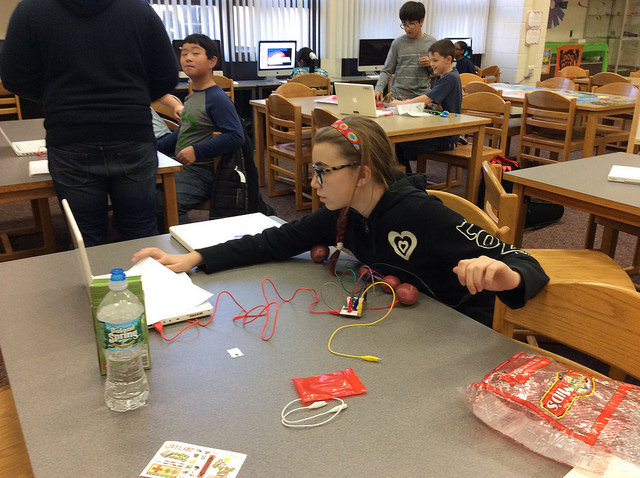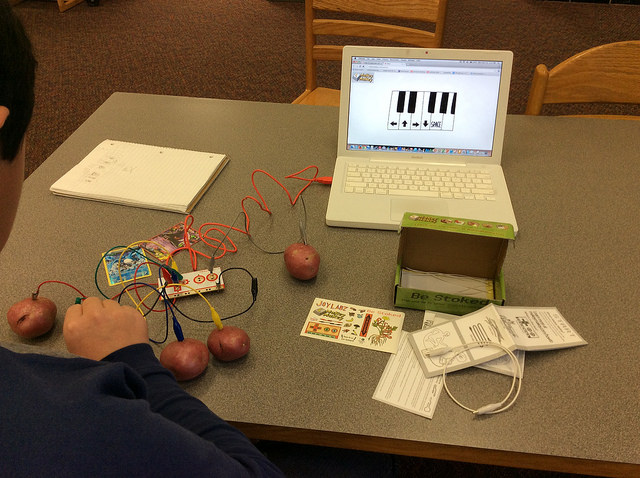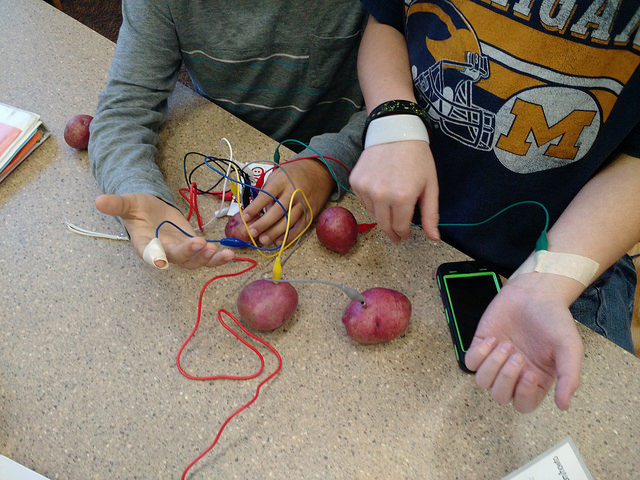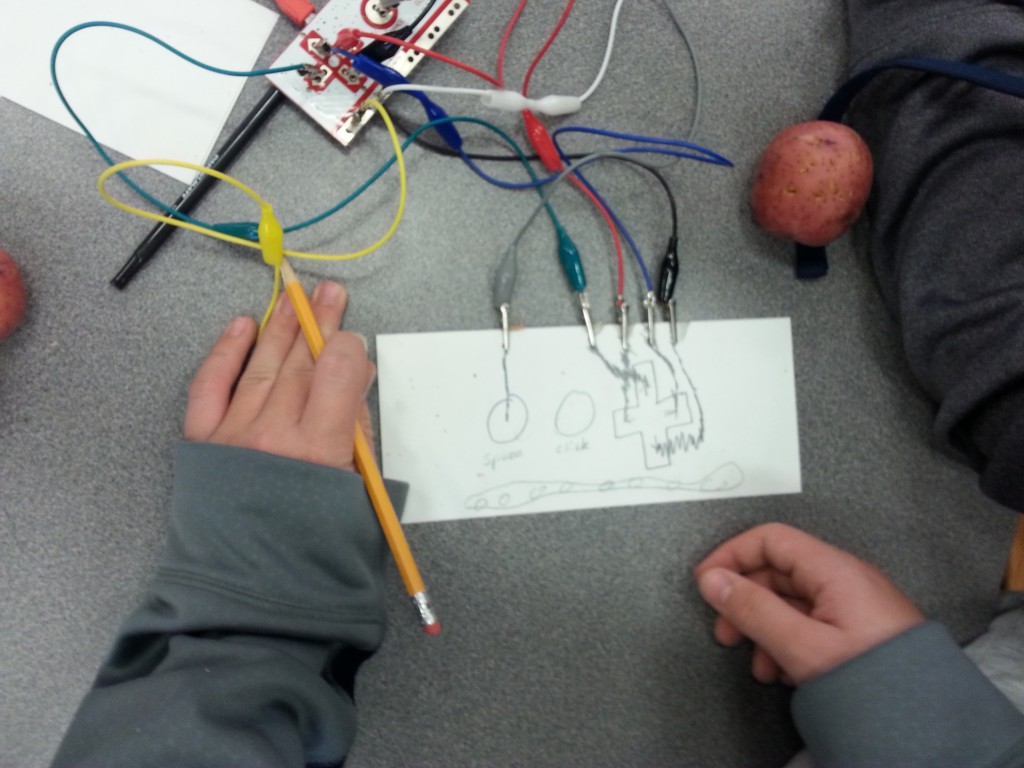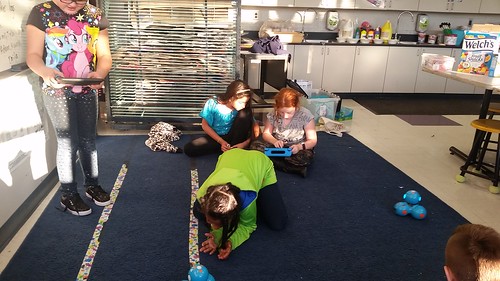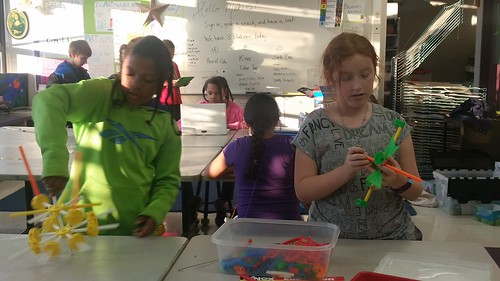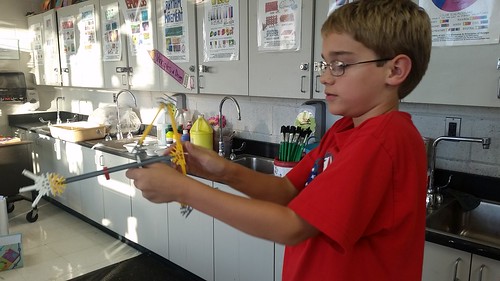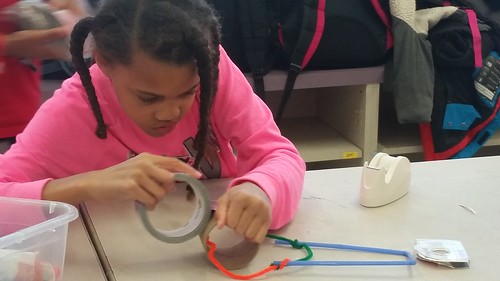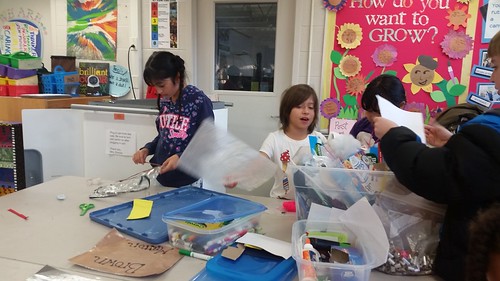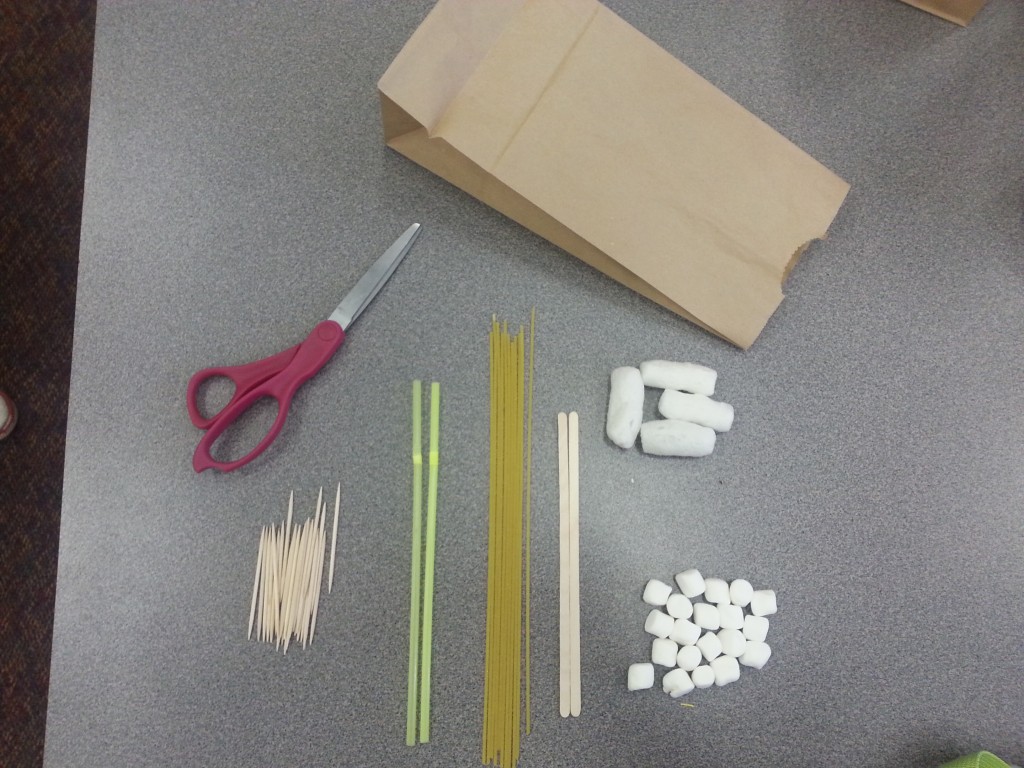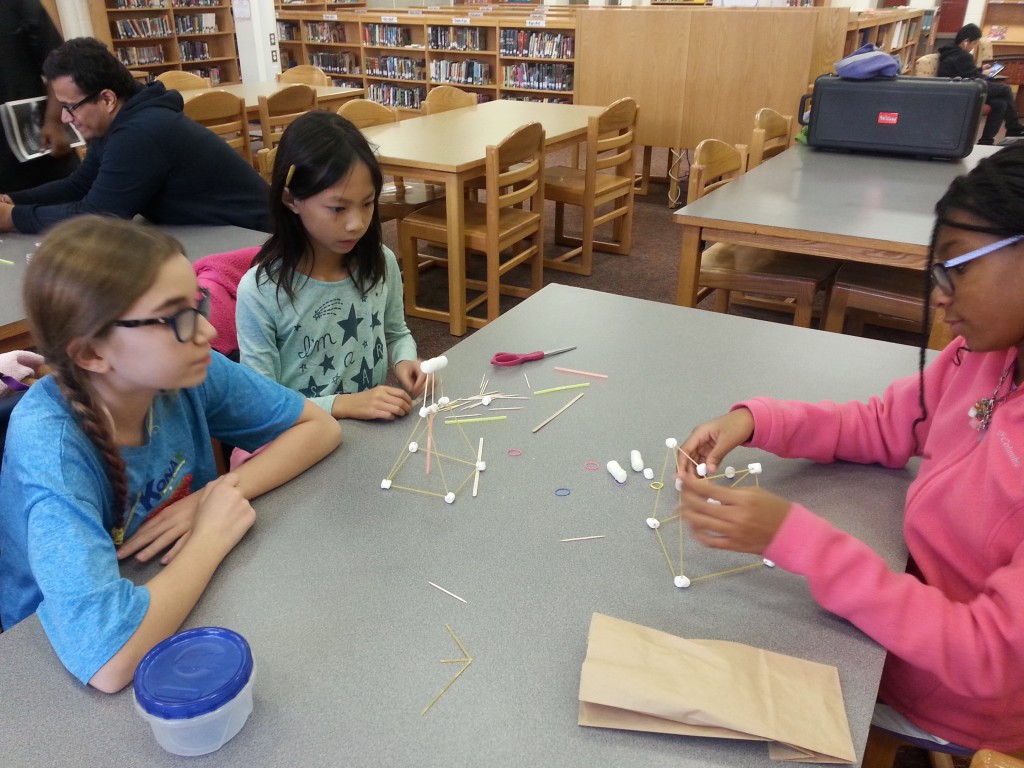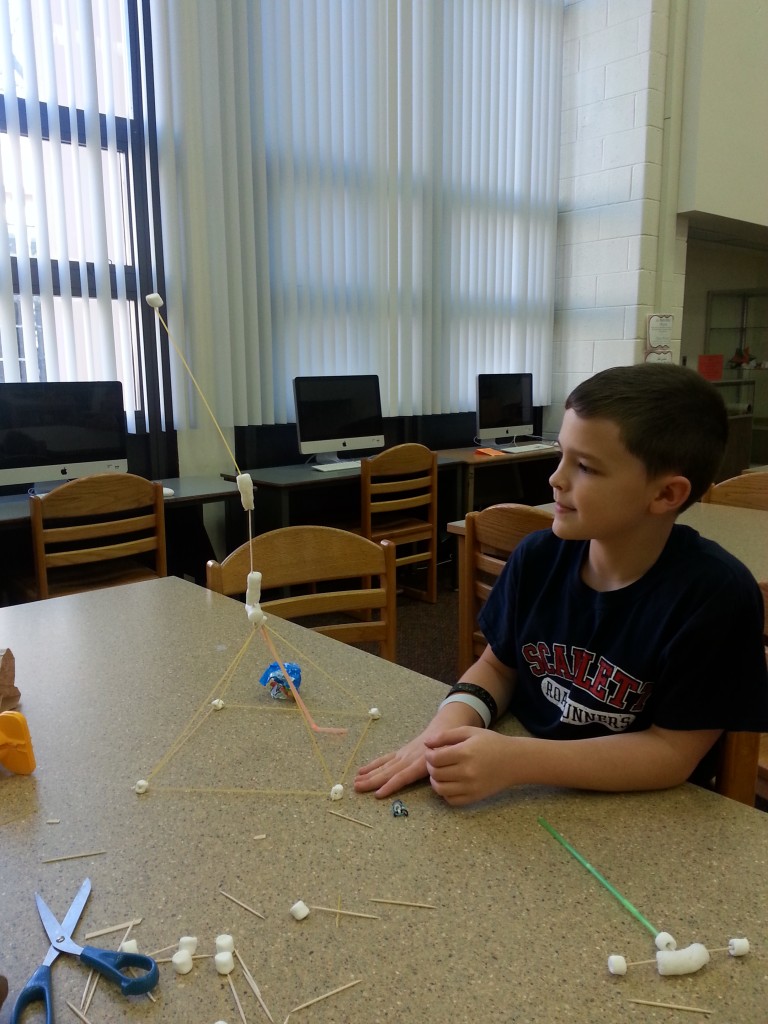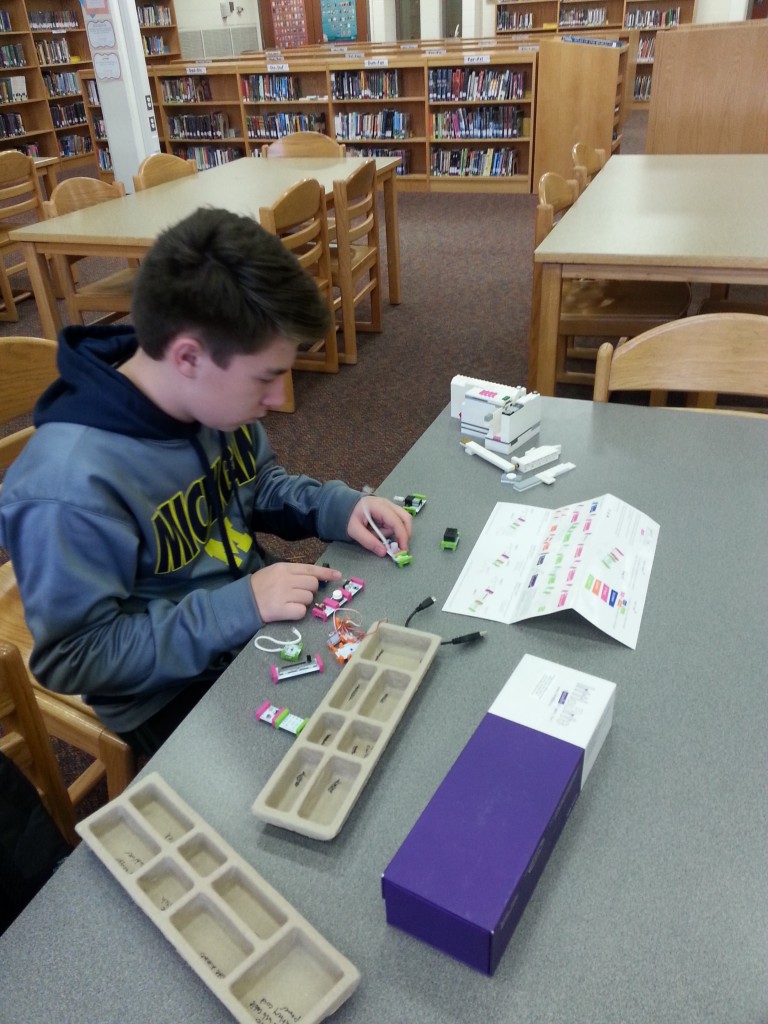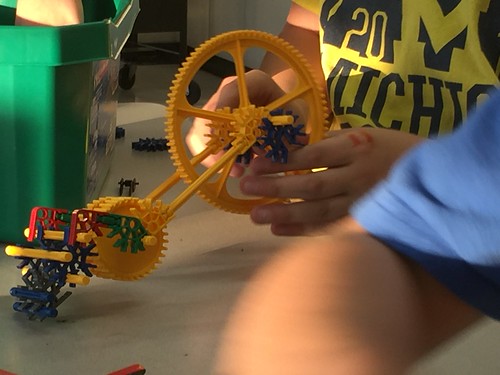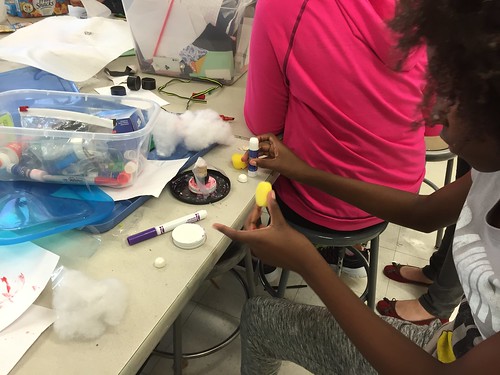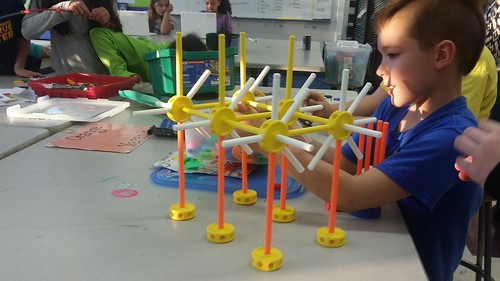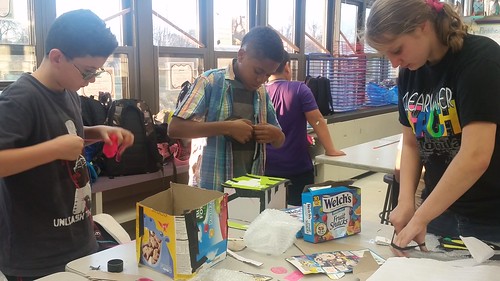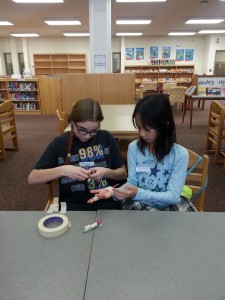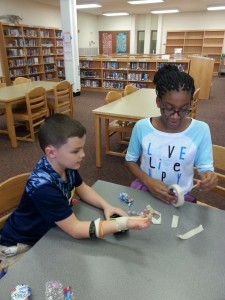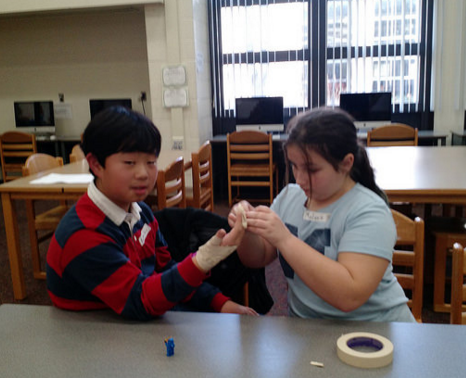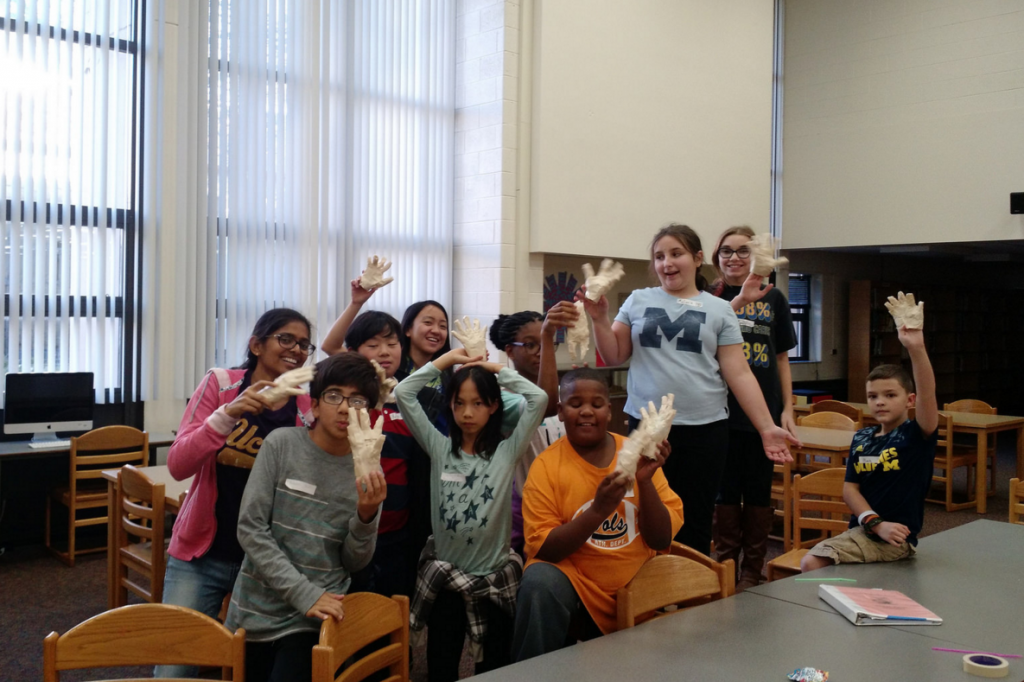After a brief hiatus, we are back in action! It feels great to be tinkering again. This semester, we are seeing a bunch of new faces joining Makers, and we’re happy to have them with us. Now let’s make stuff!
We brought back some old favorites like TechBox Tricks and K’nex. Our new Makers hadn’t seen TechBox Tricks before and were eager to figure out what to do with the kits. When one student connected pieces from the TechBox Tricks kit together to turn on a spinning motor by just waving his hand, other students wanted to try it too! Some students would put the pieces together but didn’t know why theirs weren’t working. This became a great opportunity for us slow down and figure out how the kit’s circuit worked. We figured out the differences between circuit inputs and outputs and why their order in a circuit mattered.
We also brought in a creative thinking game called Design Studio (seen below). It’s a kit that challenges students to tap into their creative potential and invent imaginative things like remote controls for pirates or couches that wizards would enjoy. We were happy to see students dip their toes into this game, going for multiple challenges and iterating on their ideas along the way. With some prompts and guidance from the kit, these students imagined and sketched some truly unique inventions!
Something stood out to us this week: team work. When one student was stuck, trying to figure out why her LED wasn’t lighting up in her circuit, another student offered to look at her circuit to troubleshoot the issue based on what he figured out just a few minutes before. We saw this happen with a circuit puzzle game, as well.
We love seeing students reaching out and giving other students a hand up. Putting multiple heads together to solve problems is a life-long skill, and we’re proud to see this happening so naturally with this group. From a learner’s standpoint, we know empowering it feels to demonstrate something that you just learned and help someone in the process!
We have some new activities coming up in the next few weeks. Stay tuned!

